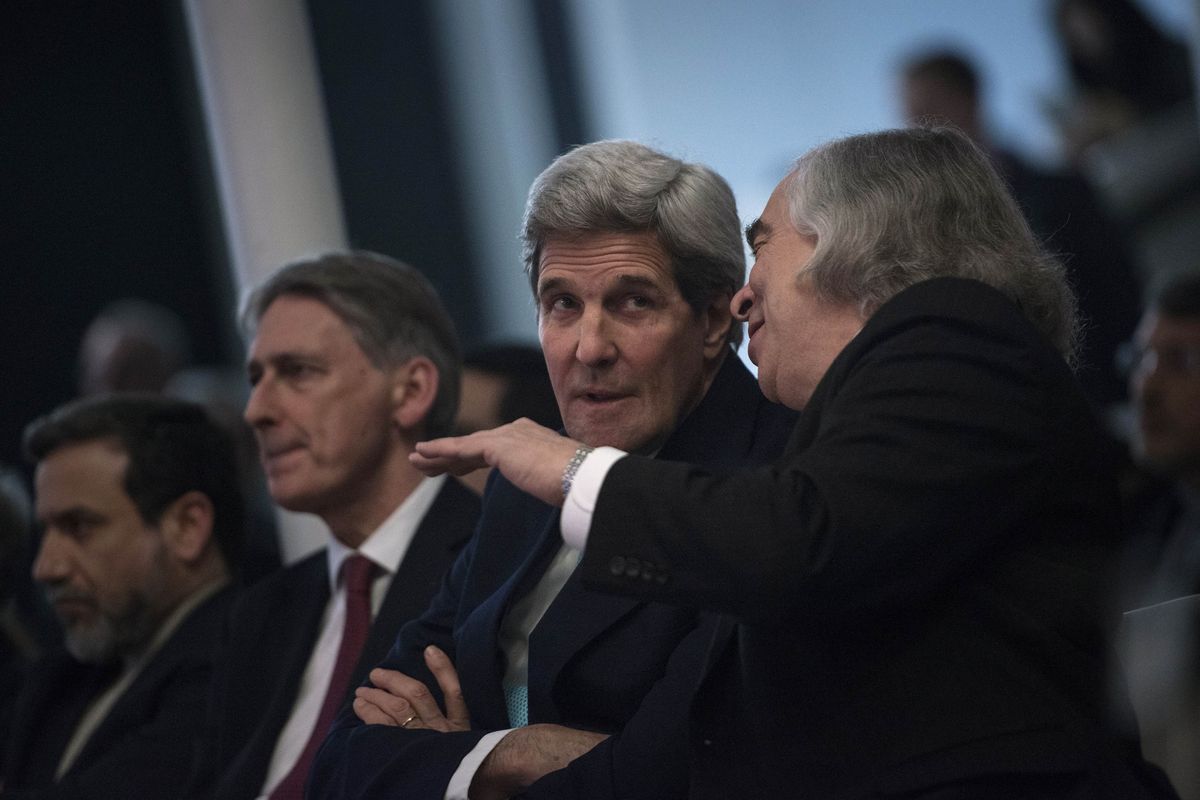Iran nuclear deal’s key points

LAUSANNE, Switzerland – Iran and six world powers reached a preliminary nuclear agreement Thursday outlining commitments by both sides as they work for a comprehensive deal aiming at curbing nuclear activities Tehran could use to make weapons and providing sanctions relief for Iran.
A look at the main points of the agreement released by the U.S. State Department on behalf of the six powers negotiating with Iran at the talks – Iran, the United States, Russia, Britain, France and Germany – to be implemented by June 30 as part of a comprehensive agreement:
Enrichment
Centrifuges can be used to enrich uranium to levels ranging from uses in energy, medicine and science to weapons-grade used in nuclear warheads. Iran says it is enriching only for peaceful purposes and now has nearly 20,000 of the machines set up at Natanz, its main site, with almost 10,000 enriching.
The June deal aims at restricting the number of centrifuges standing to 6,104, and those running to 5,060. All will be mainstay IR-1 models, Iran’s present workhorse, which enriches at much lower rates than the more developed machines Tehran would like to install.
Iran has committed to enriching uranium substantially below weapons-grade and to reduce its enriched uranium stockpile from about five tons to 300 kilograms (less than 700 pounds) for 15 years.
Breakout time
Experts assess Iran’s current breakout time – the time it could enrich enough uranium for one weapon – at 2 to 3 months. That timeline will be extended to at least a year for at least 10 years, according to a fact sheet on the commitments, which does not detail how that will be accomplished beyond reducing uranium numbers and stockpiles.
Underground enrichment facility
The Fordo enrichment facility is dug deep into a mountainside and is thought impervious to air attack – an option neither the United States nor Israel has ruled out should diplomatic efforts to contain Tehran’s atomic assets fail. Iran commits not to enrich uranium there for at least 15 years and will convert the site into a nuclear physics and technology research center.
It also commits Tehran not to do uranium enrichment-related research and development or store fissile material at Fordo for 15 years.
Centrifuges will still run at Fordo – one Western official told the Associated Press that almost 1,000 of the machines will be spinning. But they will not enrich uranium. Instead, the official said, they will produce isotopes for medical, industrial and research uses.
Transparency
The U.N.’s International Atomic Energy Agency will monitor enrichment and former enrichment facilities and related assets using “the most up-to-date, modern monitoring technologies.” It also agrees to implement an agreement with the IAEA giving the agency “much greater access and information regarding Iran’s nuclear program, including both declared and (possible) undeclared facilities,” than it has now.
Tehran also commits to address IAEA suspicions that it worked in the past on nuclear arms under terms still to be agreed on. The agency has essentially been stalemated in trying to follow up those suspicions for years.
Reactors and reprocessing
Thursday’s preliminary agreement commits Iran to redesign its nearly built reactor at Arak from a facility that would spew out enough plutonium to arm several nuclear weapons a year to a type that will not produce such material.
It also agrees to ship all spent fuel – which contains some fissile material – for the reactor’s lifetime.
Sanctions
U.S. and European Union nuclear-related sanctions will be suspended after the IAEA has verified that Iran is hewing to its commitments. If at any time Iran fails to fulfill its commitments, these sanctions will snap back into place.
All past U.N. Security Council resolutions on the Iran nuclear issue will be lifted simultaneously with Iran’s compliance with its commitments at Fordo, Arak, its implementation of agreed-on transparency and honoring other responsibilities.
U.N. Security Council resolutions dealing with the transfer of sensitive technologies to Iran will be reworked to allow a procurement channel for some now restricted goods. The resolutions also will endorse any final agreement and urge its full implementation.